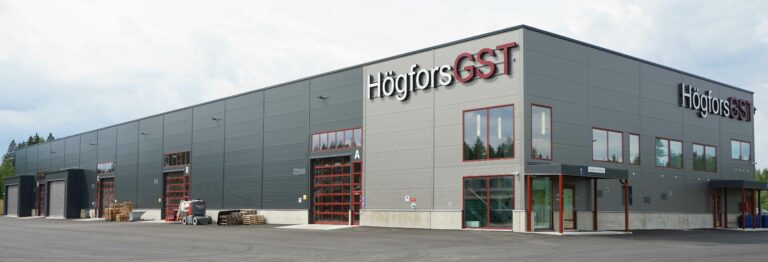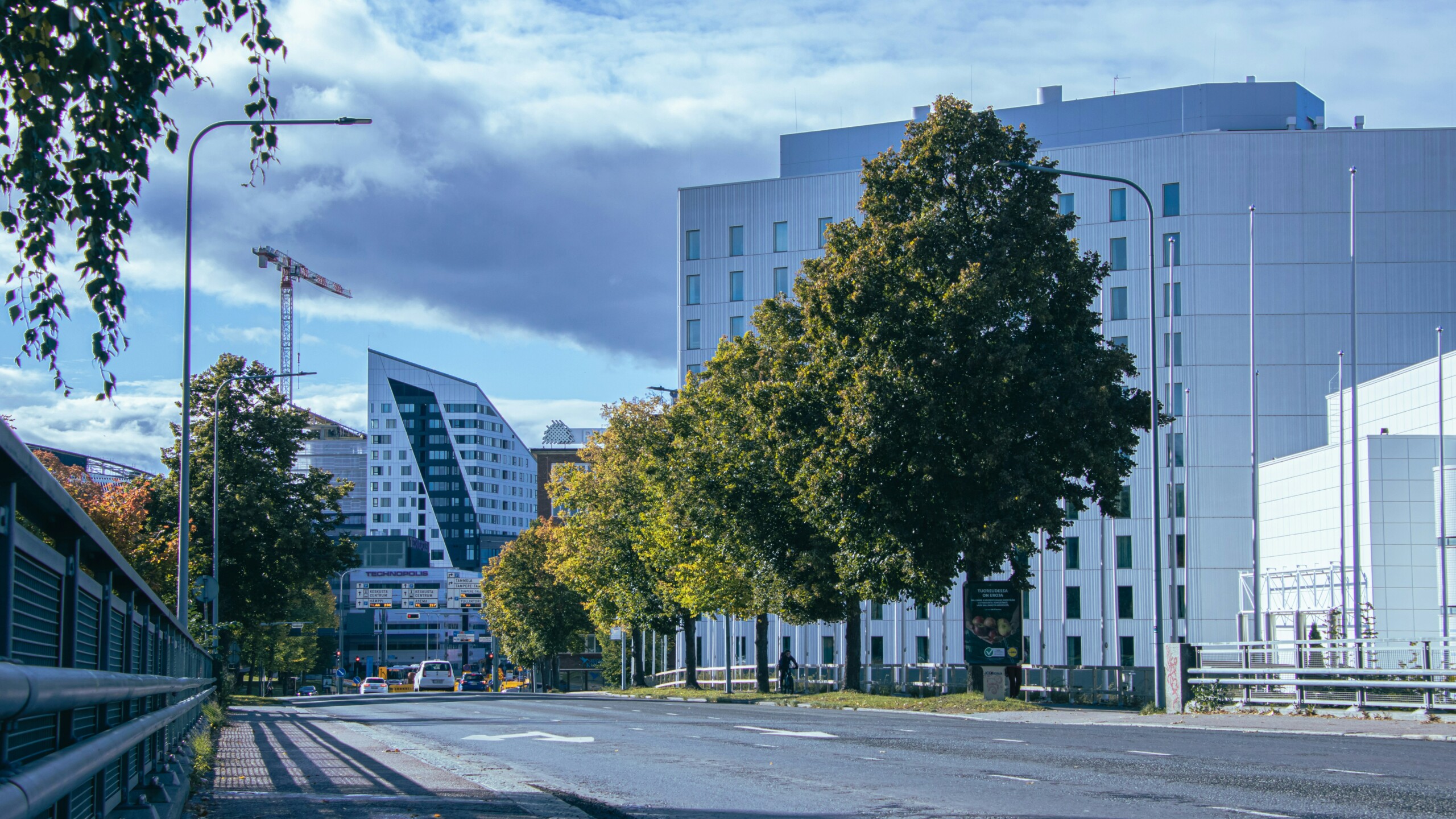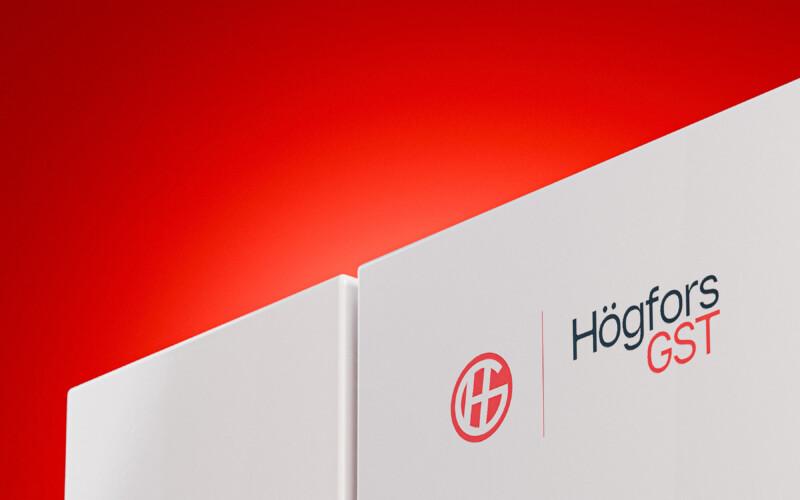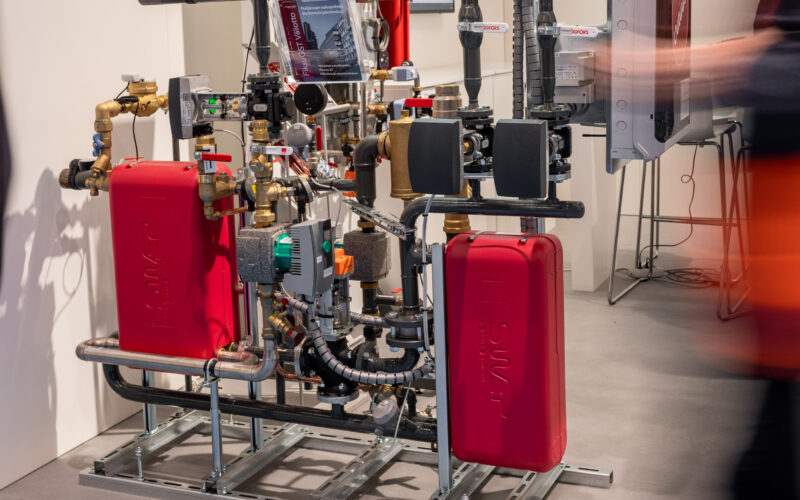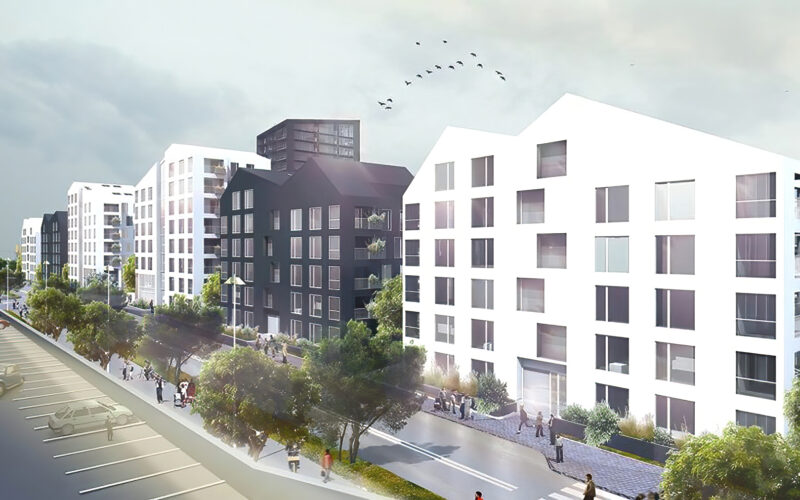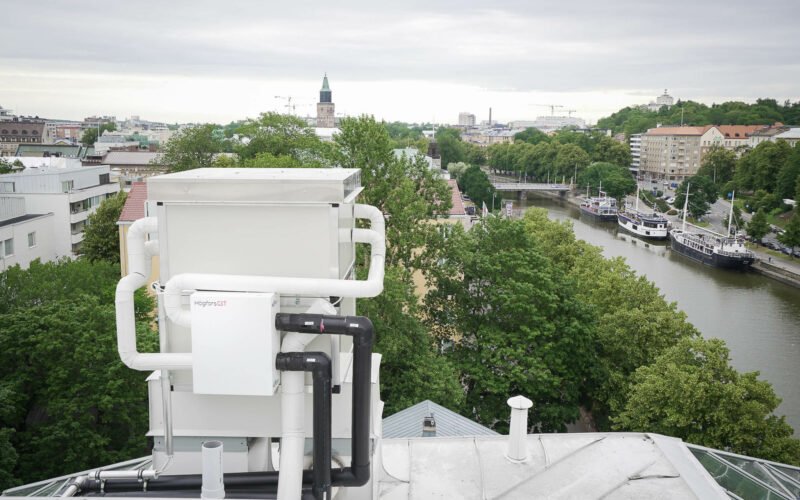Our blog series on future district heating will once again take a step towards better district heating, as lower temperatures get the spotlight. Why should district heating network temperatures be lowered and what are the benefits? What is 4th generation disctrict heating (4GDH)? These questions among many others are answered by our expert Jussi Sjöström and our Managing Director Antti Hartman

Lower temperatures are an integral part of the energy efficient district heating of the future
Lower temperatures improve energy efficiency
The discussion on lowering the temperatures of the district heating network has been going on for some time now, but recently the subject has gained more attention within the industry. According to Antti Hartman, the reduction of temperatures is an integral part of the development of the next decade.
– The key for the district heating system of the future is energy efficiency: it must be possible to produce energy more efficiently and there must be a shift from combustible energy sources to renewable energy sources. It is also necessary to be able to minimize network losses in heat transfer and to develop property-specific heating systems that are more efficient than now. A reduction in district heating network temperatures is one of the measures to achieve these goals, says Hartman.
In Finland, the design temperature of a district heating network (for outside temperature of -29 degrees Celsius) is relatively high, 115 degrees. In Sweden, for example, district heating is supplied at design temperatures 10–15 degrees lower. However, the Swedes are also actively thinking how the temperature level could be further reduced.
– It is essential to be able to reduce the temperatures of the district heating network when the outdoor temperature is close to zero, because majority of the heating season is spent at those temperatures, Hartman says.
Current equipment and network capacity as a bottleneck for change
Technology exists for even a rather dramatic drop in temperatures, but the existing equipment and properties make it difficult to implement the change.
– In multiple countries, there are certain areas where low inlet temperatures of about 65 degrees are used all year round. However, this requires new houses, in which heating systems can cope with lower temperatures, says Jussi Sjöström.
Many of Finland’s district heating properties were built in the 1970s and 1990s, and the heating systems were designed to suit the technology of that time. Thus, radiator networks and substations in old buildings were not originally designed for low temperatures.
– Combustion was cost-effective for a long time and really the only sensible way to generate heat, so of course district heating equipment was designed for the technology of the time. However, with new forms of energy and technological development, it is possible to operate the district heating network at significantly lower temperatures and keep the living conditions comfortably warm, says Hartman.
The heat demand of houses has decreased over the years, which contributes to the possibility of lowering the inlet temperatures.
– Properties’ heating systems are often “oversized”. The energy efficiency of properties has improved with improvements over the years. The so-called internal thermal load has also increased from the time the systems were designed, as the amount of heat generated by electrical equipment has increased tremendously in recent decades, Sjöström says.
A decrease in supply network temperatures reduces heat losses
The most essential parts of a district heating system are the supply and return network. Hot water flows from the power plant to the customers in the supply network, and the customers return the water they use back to the energy plant through the return network. It is possible to lower the temperature of both networks, but in slightly different ways.
The lowering of the supply network temperature takes place at the power plant: water is simply heated less than before. According to the latest studies, network temperatures could be reduced by up to 20 degrees without compromising district heating supply or significantly increasing costs. In fact, a decrease in temperatures may improve networks’ security of supply and reduce costs, even over a short period of time.
The greatest benefits of lowering the supply temperature arise from the reduction of heat losses and the possibility of connecting new, non-combustion-based heat sources to the district heating network.
– Lower temperatures are a prerequisite for bidirectional (or two-way) district heating networks. If the temperatures in the district heating network are not decreased, bidirectional district heating cannot exist, says Sjöström.
According to Hartman, connecting heat pump energy to a low-temperature network is more profitable than connecting to the current high-temperature network.
– By lowering the network temperature, a huge amount of energy from, for example, industrial waste heat can be incorporated into the district heating network through heat pumps. The amount of electricity consumed by heat pumps is drastically reduced when, for example, the waste heat needs to be primed to only 75 degrees instead of 100 degrees. Thermal storages also have more power available when the network temperatures are lower, as their storage capacity increases.
Better Delta T equals better energy efficiency
In addition to lowering the supply network temperatures, lowering the return network temperatures also improves energy efficiency. The key to lowering the return network temperatures is improving the Delta T, which means that the customers use the energy in the district heating water as efficiently as possible.
The decrease in return network temperatures improves the energy efficiency of district heating in several different ways.
– Based on multiple studies, significant cost savings can be achieved by lowering the return network temperature by reducing heat losses and pumping costs, for instance. However, in the current combustion-based production, the biggest improvement will be in the efficiency of flue gas scrubbers. Due to the lower return temperature, the flue gas scrubbers can transfer more thermal energy to the return water. Therefore, less primary energy is needed, Hartman describes.
Properties’ heating systems are the key for improvement
According to Hartman and Sjöström, most of the work to lower temperatures is done in boiler rooms in residential and office buildings.
– There are hardly any technical constraints on lowering temperatures at the production end, but the problem is that the old substations are not designed for low temperatures. If temperatures are lowered without upgrading customer equipment, flow rate must be increased to obtain the same thermal output. The capacity of the network may not be able to withstand the large increase in flow, which can cause bottleneck situations at times of peak demand, Hartman ponders.
Then how can we lower the temperatures? There are several answers to this question.
– The most important thing is to upgrade heat transfer technology. More efficient heat exchangers and new, innovative connection methods can improve the capacity of heating systems. By increasing capacity, it is also possible to reduce flow and the previously mentioned bottleneck situations, Sjöström lists.
Adjusting and optimizing heating systems is also important. According to Hartman, the best result is achieved by a combination of old and new tricks.
– It’s a good idea to start with the basic regulation of the radiator network, as a balanced radiator network works better at low temperatures. An even greater benefit comes from an smart control system, such as Fiksu, which allows the entire building’s heating system to be monitored and adjusted in real time.
– Energy renovations are also a good thing for the goal to reduce temperatures, as they improve the energy efficiency of buildings and reduce the need for heat.
What should we do first to lower network temperatures?
Hartman and Sjöström list five things that could help accelerate the positive development in network temperatures.
1. Upgraded, modern customer equipment and carefully considered, efficient connections
“As said before, the key for lower temperatures is to upgrade customer equipment. Lowering the design temperatures of the equipment and using the right sized heat exchangers are good first steps. This can be enhanced by using more efficient connections that improve Delta T”
2. “Smartification” of the network and heating systems
“The addition of smart devices makes it possible to monitor and optimize the operation of heating systems.”
3. Balancing radiator networks
“A balanced radiator network functions better at low temperatures”
4. Incentive district heating pricing mechanisms
“District heating pricing should be modified to encourage customers to invest in equipment that improve Delta T. The benefits of lower temperatures must be shared throughout the value chain.”
5. Scrapping premium for old substations to accelerate the positive trend?
“For example, the state of Finland has recently invested in a huge variety of energy subsidies, but district heating customers have more or less missed out on these new subsidies. Could a “scrapping premium” be introduced to replace old district heating equipment? If a certain criterion is met, the state would reimburse a small part of the cost of acquiring a new substation. This would speed up the transition from old to new devices. This form of subsidy proved to be efficient a few years ago when done in the car industry, so why not give it a try in heating as well?”
